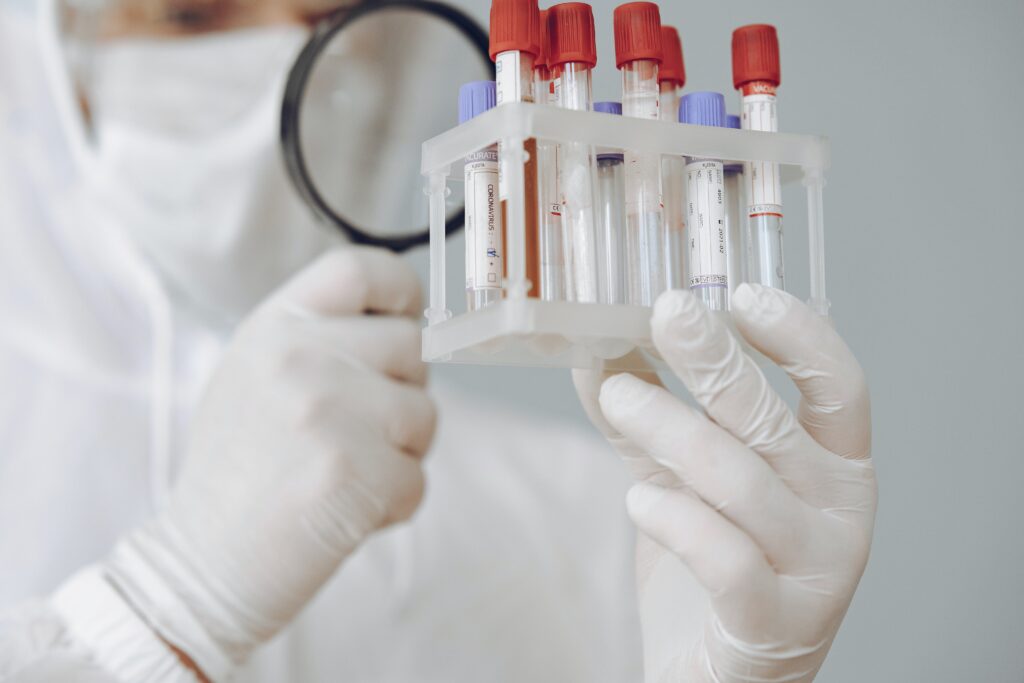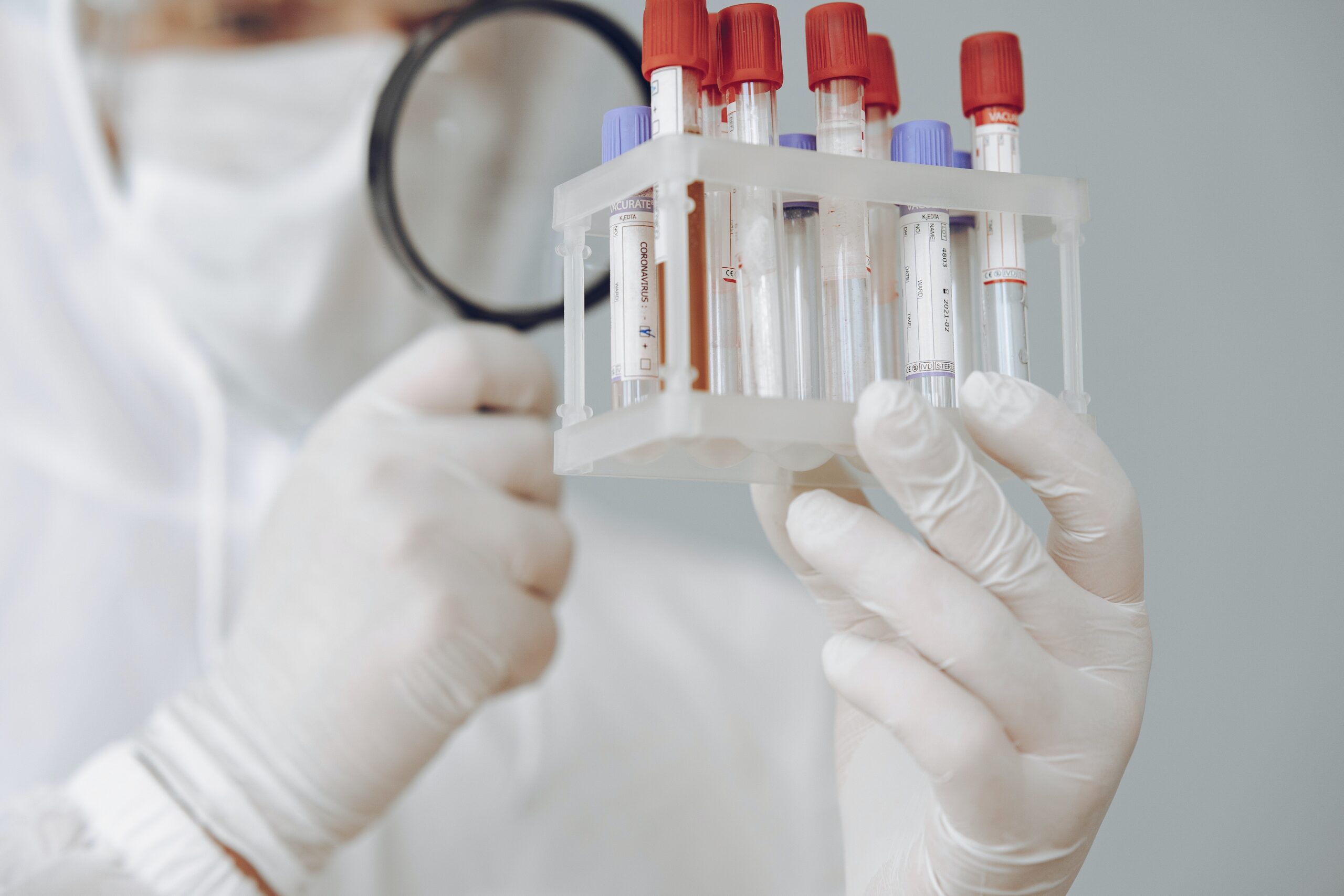ESR test is a blood investigation that is used to identify ongoing inflammation in your body. Inflammation is the protective mechanism of your body that guards your body tissues. And it will helps heal from any injury, infection, or other diseases. Normally inflammation is a helpful mechanism that has a sudden onset and resolves within a short duration of time. Although it can be harmful when it lasts for too long.
Erythrocytes are red blood cells and sedimentation rate can be defined as the speed the red blood cells settle down. Normally red blood cells settle down very slowly. But during inflammation, cells stick together and form clumps. It happens due to some proteins secreted in the body as a response to inflammation. These clumps are heavier than normal red blood cells. Which also have an increased speed of settling down.
During this test, the blood sample will be placed in a tall thin tube called a Westergen tube. After that let the blood cells settle down. Some time later, the clear part of the blood which is also called plasma comes to the top of the tube and the blood cells will be settled down. The height of the column of clear fluid at the top of the tube will be measured after one hour. It is called ESR.
A higher height of plasma or else higher ESR amount indicates that lots of red blood cells have settled down during the time of one hour. While a lower height indicates that only a few cells have settled down. Because of that higher ESR levels can be due to ongoing inflammatory reactions in your body.
What are the Uses of this CRP Test?
Normally your medical officer will recommend you this test to find out the presence of inflammation. And also to monitor the inflammatory status of your body. But this test can’t specifically identify the cause of inflammation although the presence of inflammation is identified. Hence this test is normally combined with many other investigations to reach a precise diagnosis.
Conditions including autoimmune disorders such as Inflammatory bowel disease, Lupus, Rheumatoid arthritis, some Carcinomas, and infections can cause inflammatory reactions in your body. Which results in high ESR levels. If you have,

- Joint pain
- Morning stiffness
- Headaches
- Vision changes
- Unintentional weight loss
- Digestive symptoms such as diarrhea, blood in stools
- Fever
Then your doctor will ask you to get an ESR test. Because these symptoms can occur due to inflammatory diseases such as Inflammatory bowel disease and Rheumatoid arthritis.
After treating such inflammatory diseases, your medical officer will recommend you get ESR tests done regularly to monitor the response of your body. It will help to plan the next steps of treatment. Also to prevent further complications. If the ESR level falls after initiating treatment it might indicate the inflammatory reactions that had been in the body are now settling with good response to the treatments.
How to Prepare for the ESR Test?
Usually, this test not requires preparation as fasting. But if you are recommended to get any other blood investigations along with this test, you will have to stay fasting and be prepared which will be informed to you in advance by your medical officer.
Some medications can falsely reduce ESR levels which include drugs such as non-steroid anti-inflammatory drugs, statins, and steroids. As these drugs can alter your result, it is important to inform your doctor about all the medications you are on before the test and get pieces of advice regarding continuing or discontinuing them before the test. Also, you must inform your doctor if you are pregnant or menstruating at the time the test is performed.
How Is the Procedure Done?
Normally the person who takes the blood sample will initially clean your arm and then insert a needle. Usually, blood is taken from the medial aspect of the area near the elbow of your arm and normally venous blood is taken for this test. The needle may sting or pinch a little initially, but it doesn’t hurt a lot. By inserting the needle, a blood sample will be withdrawn and collected into a tube. Then the needle will be slowly removed while placing a bandage on your arm. The sample taken from you will be sent to the hematology laboratory for analysis.
After the test is done the pinched site will be covered by a piece of gauze on your arm, secured by a tape. You will feel sore around the site of injection for a few hours and later you may develop a small bruise at the injection site. You can return to your usual activities right after the test is performed.

How to Interpret the Results of this Test
ESR is measured in mm/hr and the normal value for men is ranged between 0mm/hr to 15mm/hr and is ranged between 0mm/hr to 20mm/hr in women. Amounts higher than the normal range may indicate some sort of ongoing inflammatory process in your body which may be a systemic or localized inflammatory and infectious disease, tissue injury or ischemia, trauma, certain carcinomas, blood or vascular diseases, kidney diseases, thyroid diseases, autoimmune diseases, and many other medical conditions.
Also, low ESR levels such as near 0mm/hr level can be due to conditions such as heart failure, low plasma proteins due to liver diseases or renal diseases, high white blood cell counts, disorders of bone marrow that cause increased production of red blood cells and many other conditions.
It is important to identify that some factors can alter the ESR levels of your body without any medical conditions. Those factors include older age, obesity, use of certain medications, pregnancy, and menstruation.
What can you do if you get high ESR levels?
When you get high levels of ESR, your doctor will initially recommend you get done some other blood investigations to identify the underlying pathology precisely.
if an inflammatory disease is diagnosed, you will be given non-steroid anti-inflammatory drugs or corticosteroids; if it is an infection, you will be prescribed antibiotics.
Also, through lifestyle modification steps which include regular exercises, maintaining your weight in the healthy BMI range, and having a well-balanced nutritious meal you can reduce your ESR levels.
References
• Kumar and Clerk’s Clinical Medicine -8th Edition- Parveen Kumar, Michael Clark
• Oxford Handbook of Clinical Medicine – 10th Edition

